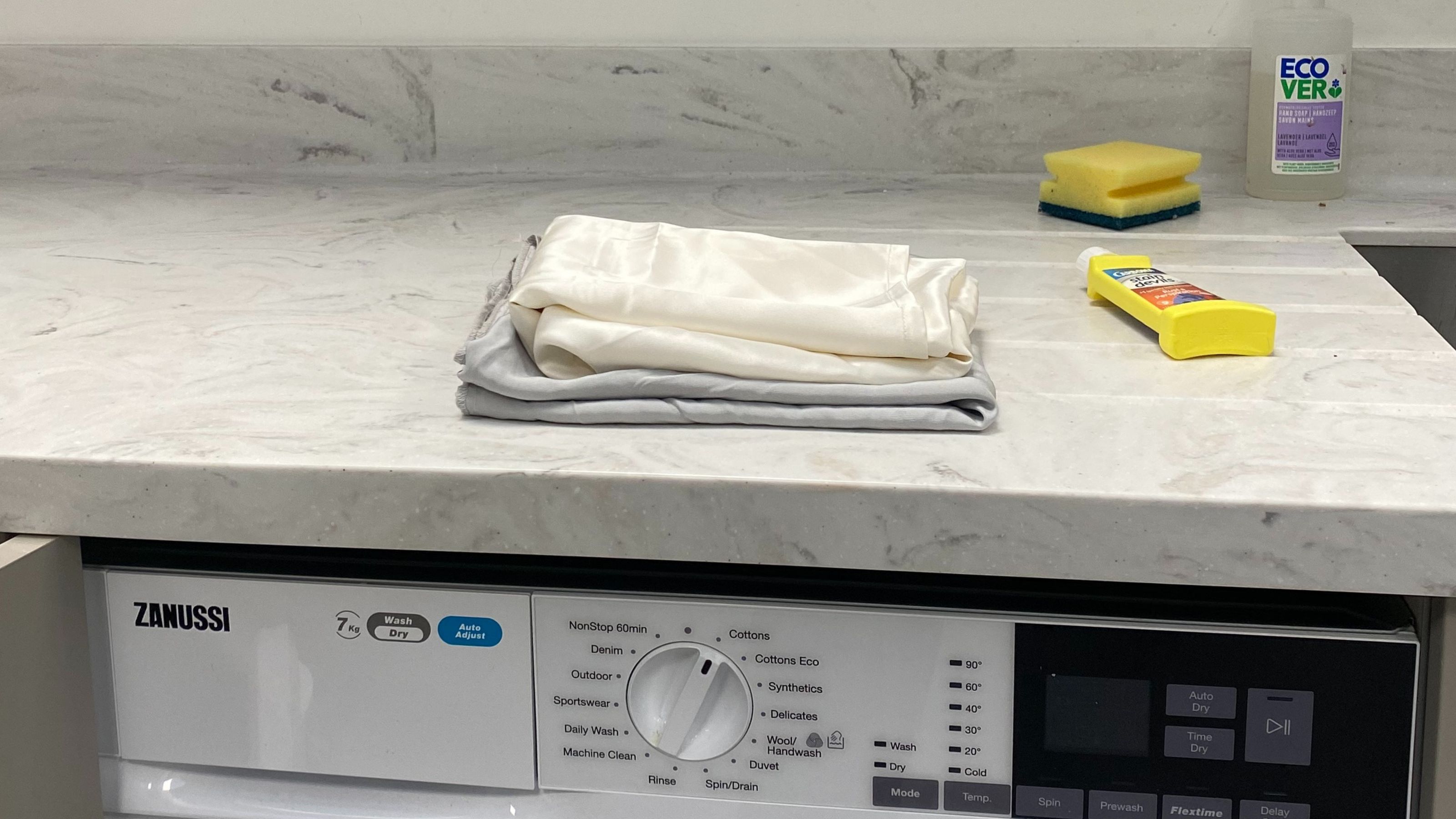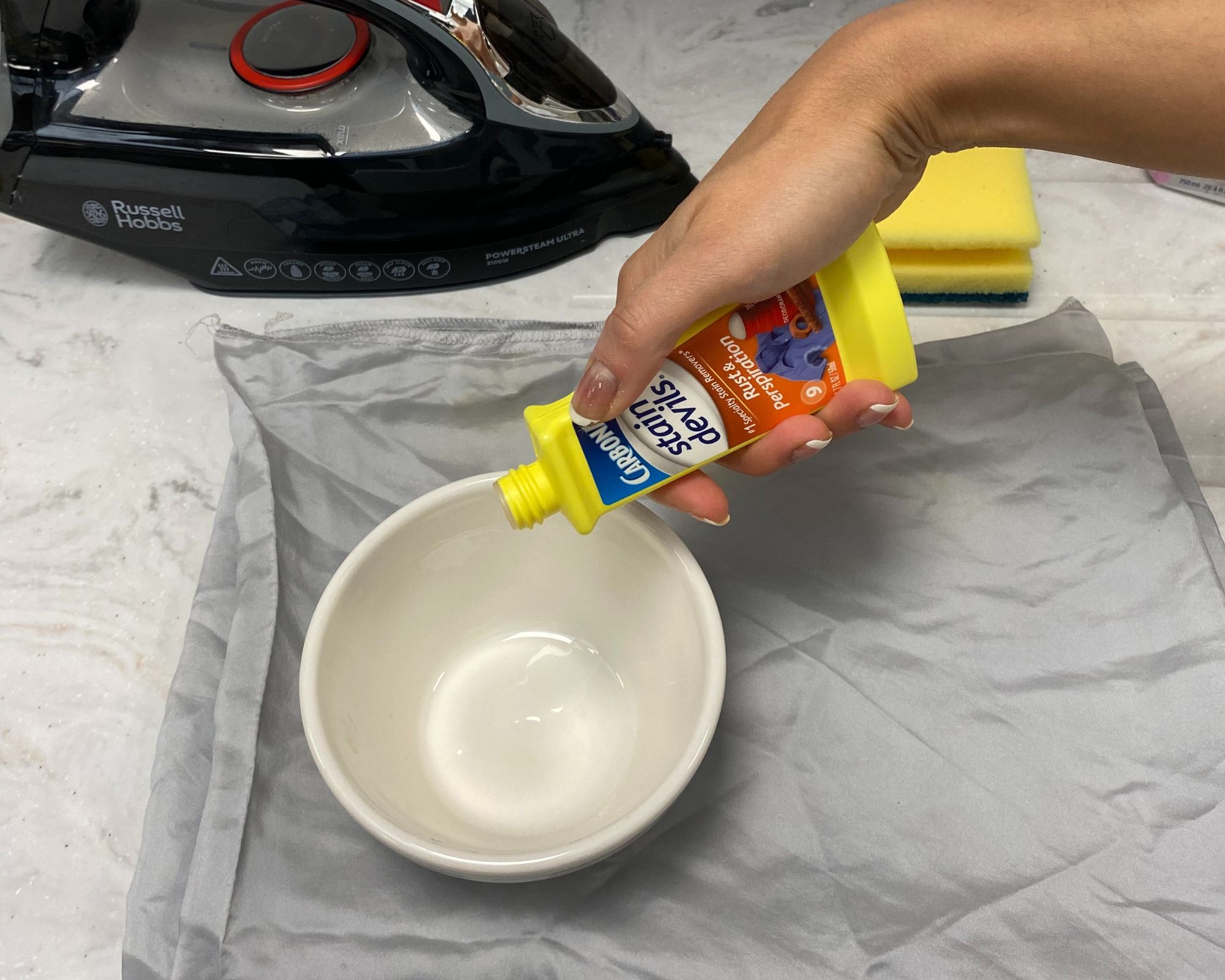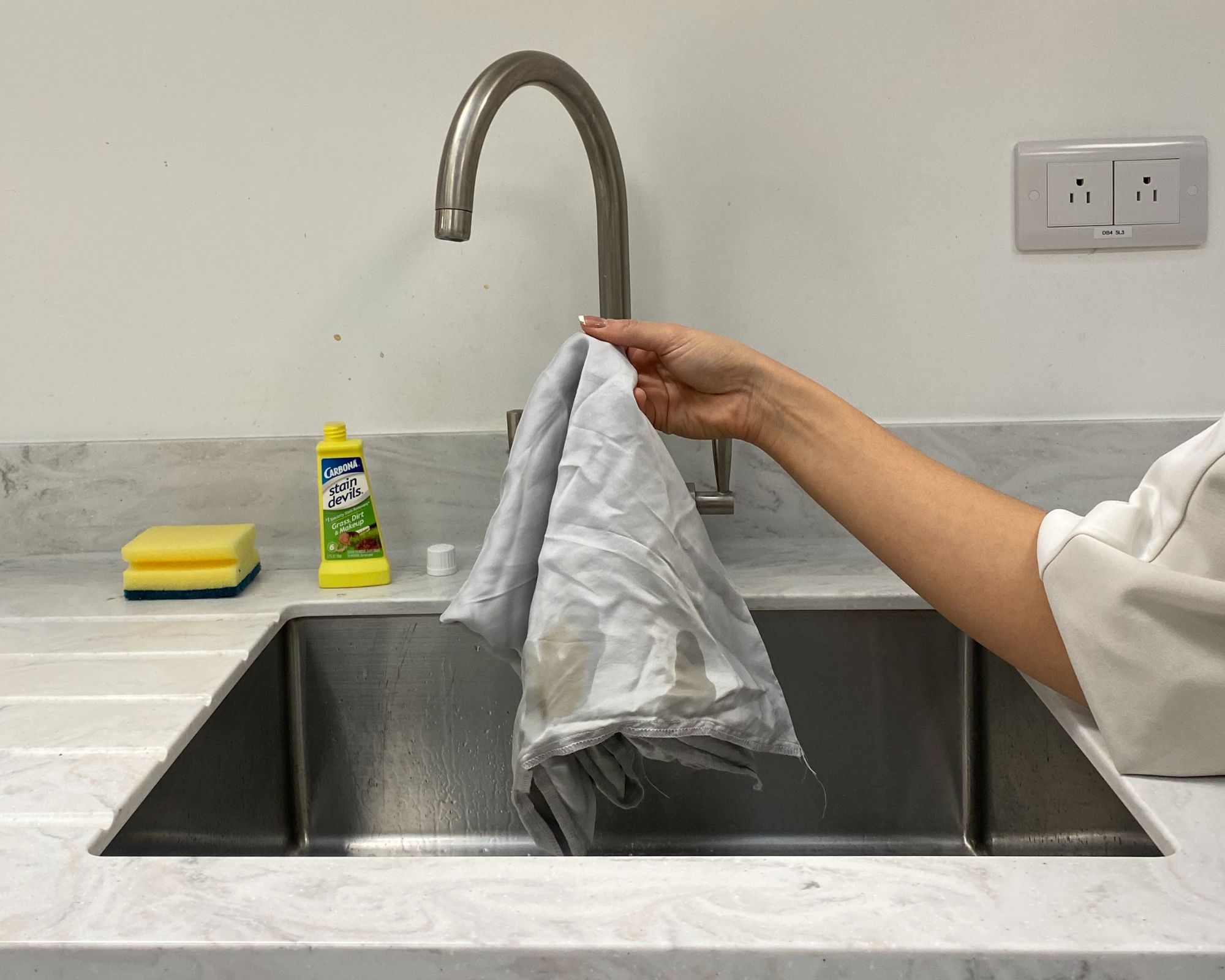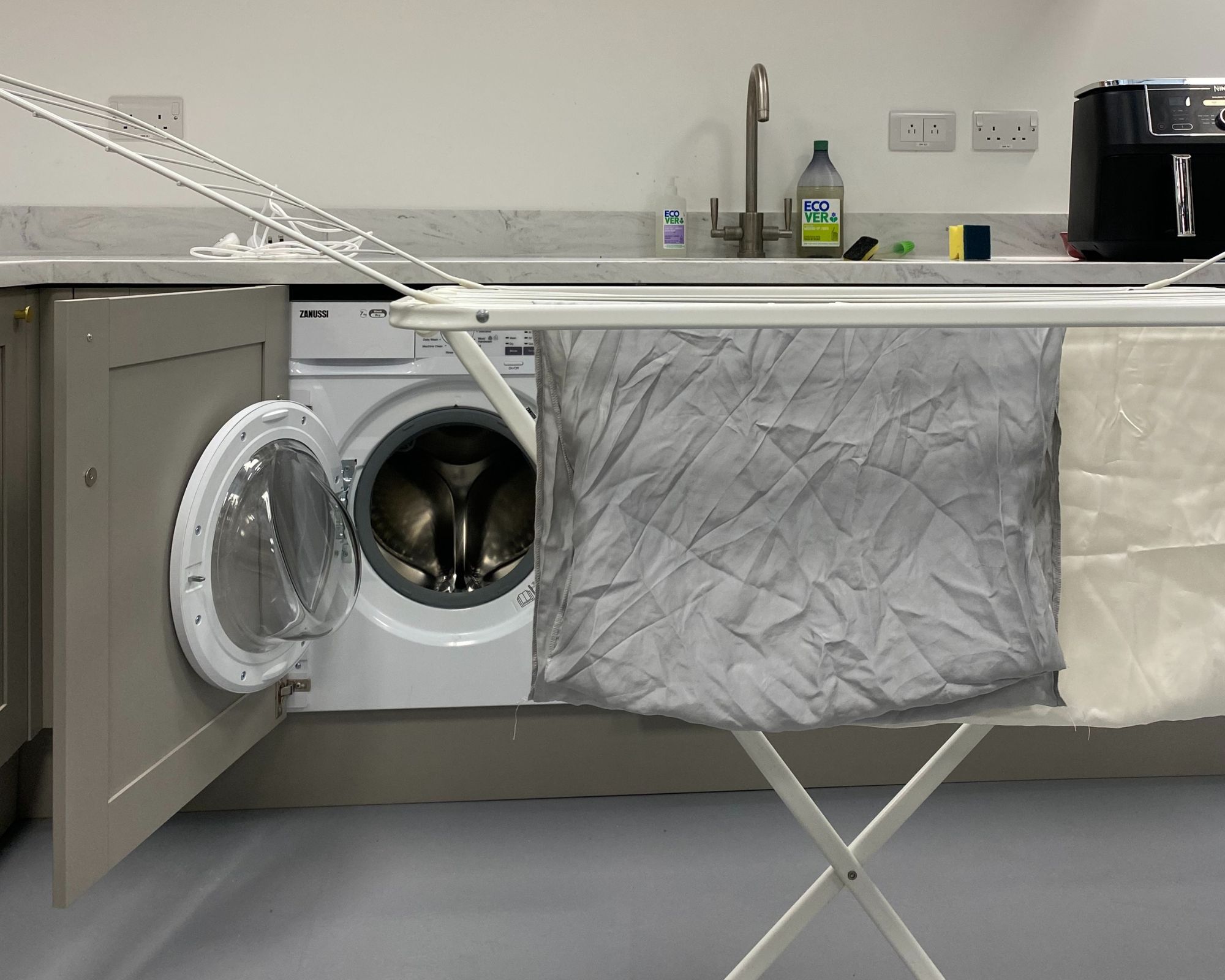
Silk pillowcases are my secret to better skin, hair, and sleep. Yes, these bbs are a must-have in your beauty routine. If you suffer from sensitive skin (like me), or are a curly-hair girl, like our ecommerce editor Christina, you'll seriously benefit from sleeping on a silk pillowcase — but only if you keep it clean.
There's certainly no point expecting glowing results from swapping out your cotton cover for a silky sham if you're not going to wash them. I'm talking more than popping it in the wash every other week with your bed sheets. Your pillowcase collects more dirt than the rest of your bedding. You put your head, hair, and neck on it night after night, and bacteria can build up pretty quickly. Plus, it only takes one late one when you *regrettably* slept in your makeup to stain it.
As far as fabrics go, silk is hard to care for. Delicate to the touch, thin, and pretty expensive, one wrong wash of your silk pillowcase and you could completely ruin it. I won't let that happen to you though. I've put together a simple three-step guide to loosen your laundry load, better your beauty sleep, and keep your silk pillowcase in great condition.
Good to know
Time: 1–2 hours
Difficulty: Easy
Helpful hints: If you haven't already, make sure to check the care label. Depending on the momme and overall silk composition, how you wash silk will differ. Some silk pillowcases can be thrown in the wash with the rest of your bedding. Most will need to be hand washed, in which case, follow the steps below:
Here's what you'll need
- Your sink (or a wash bowl)
- Fabric stain remover, like this one from Shout
- A soft cleaning cloth (from Amazon) or brush
- A washing machine (if your pillowcase allows it)
How to clean a silk pillowcase
Step 1: Pre-treat stains on your pillowcase

Whether you wear self-tanner, spilled your morning coffee, or slept with a ton of mascara on, it's more than likely your pillowcase has stains. After sleeping on it for more than a few nights, I'd be surprised if your silk is completely stain-free. It's a thin, delicate material that usually only comes in light colors like white or pink, so it's prone to staining.
Start by removing the pillowcase and then pre-treat stains with a strong remover. Follow the instructions on your treatment, which may mean diluting the solution or simply applying it directly to the mark. Work it into the area with a soft cloth or brush, and allow it to sink in for around 10 minutes.
Top tip: It's a good idea to buy a specific treatment for the type of stain you have — I used Carbona's makeup stain remover, for example.
Step 2: Wash according to the correct instructions

Some silk pillowcases may be able to withstand a cycle in the washing machine, but make sure to double — if not, triple — check this to avoid the chance of completely ruining your pillowcase. Generally, we'd suggest hand-washing even if the label states otherwise. If hand-washing, do so with cold water in a sink or tub and an ultra-gentle detergent.
Turn your silk pillowcase inside out and softly push the pillowcase back and forth in the water, letting the solution soak in. You should try not to twist, drag, or rub it too roughly, as silk fibers are extremely weak when wet. You should then drain and refill the sink with water to rid the pillowcase of any soapy suds and residue from the detergent.
If you can machine wash your pillowcase, here are the recommended steps:
- Turn the silk pillowcase inside out before laundering, and place the pillowcase in a mesh laundry bag or even an old pillowcase to protect the silk from tearing and pulling in the washer.
- Add a gentle powder or liquid detergent without enzymes or bleach — a plant-based eco-friendly laundry detergent may do the job.
- Use a cold or lukewarm delicates cycle if possible.
Step 3: Let the silk pillowcase dry completely

Make sure your pillowcase is properly dry before putting it back on the bed or storing it. Unfortunately, silk pillowcase can't be tumble-dried, unless the label suggests otherwise. Silk will struggle to withstand high temperatures and may tear, bobble, or lose its smooth texture if thrown in the dryer. Instead air dry on a clothesline or rack for a few hours. This may take some time, but it'll be worth the soft results. Make sure you dry it away from direct sunlight too, as the harsh rays can cause the silk to discolor.
If your pillowcase is strong enough to get through a tumble dry, make sure to do it on the lowest heat setting possible. You should also take it out of the dryer while it's still a little damp, giving it some time to air dry. To speed up the drying process, you can lay it on an absorbent towel.
FAQs
Can you iron silk?
If you have chosen to machine wash and dry your silk pillowcase, it can get especially crinkly. Luckily, you can iron silk. Just make sure you iron on the lowest temperature setting possible. Too hot and the silk can easily burn. In fact, I'd recommend using a hand-held steamer or even a wrinkle releaser spray for better, risk-free results.
How often should you wash a silk pillowcase?
As often as possible! Yes, silk pillowcases are great for helping with your hair, skin, and sleep as they are naturally cool and smooth the touch, which results in less friction and irritation. They help keep your skincare intact all night and prevent your hair from damage caused by tossing and turning. While they have benefits that go beyond the standard cotton or linen pillowcase, they need to be washed just as frequently — once a week is recommended. Pillowcases get dirty quickly and easily, even if you can't see any actual stains.







